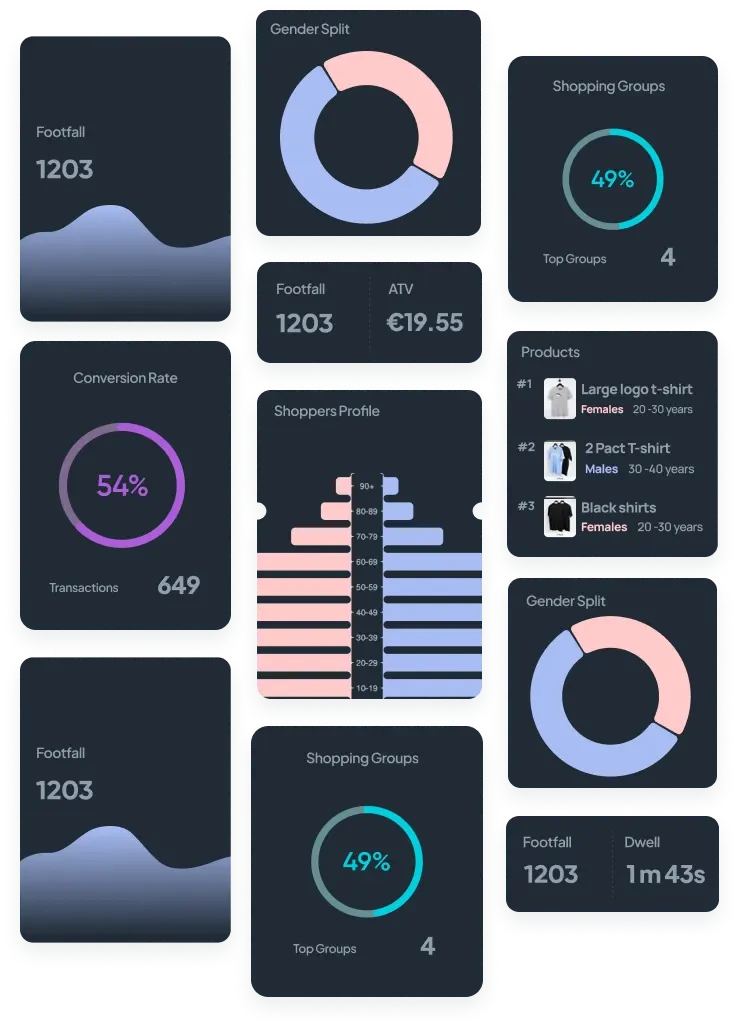What Can Retailers Do With Their Shopper Insights?
Keith Monaghan
February 19, 2024
An enormous amount of activity takes place within retail locations, and depending on the size of a store, there could be thousands of shoppers streaming through on a given day. Until recently, most brick-and-mortar stores only had standard footfall to rely upon, along with daily sales figures from which to measure a particular store’s activity and profitability.
Retailers now have a variety of options for measuring how each individual shopper has interacted in their store, from the entrance, through the aisles, and finally to the till. However, most retailers still struggle to understand to what extent a retail team’s efforts are being rewarded.
Experience management company, Surveymonkey, attest that retailers typically use shopper data to affect equity, increase sales, and raise the profitability of a brand, category, or store, through shopper-centric changes to the retail environment and messaging.
But what exactly is meant by “Shopper Insights”?
Essentially, they are the most important datapoints a retailer needs to know their shopper, increase profitability, change layout, change pricing, re-direct marketing, and generate more accurate conversion reports to assess opportunity spend. The insights most retailers are interested in are:
Who is the shopper?
What products are the shopper engaging with?
What is in a particular shopper’s basket?
When was the shopper in-store and when did they make their purchase?
What leads to a sale and what leads to an abandoned basket?
Why a shopper is behaving in a certain way is a much more difficult question to answer. However, assumptions can be made from A/B testing, and measuring the impact of in-store changes. No two retail locations are the same of course, but once a store has access to the above metrics, they can then begin to examine the results of their changes.
No retailer will ever capture all of their opportunity spend because not every shopper is going to make a purchase. But retailers can use shopper data to boost sales from their highest spenders by catering more to them, or conversely, they can decide to raise the spend from their lowest daily spenders, by promoting items or bundles within store that these lower spenders are often seen buying at the till.
Shopper insights do not just stop at marketing and sales. They naturally progress into all other areas of store management. If you can analyse your shopper, they themselves will begin to tell you more about your stores. Even simple anonymized metadata can show a shopper’s movements, preferences, basket sizes, and purchase patterns.
Store’s which have never been privy to these types of insights will then be able to cater to those specific shopper patterns. Ranging from shelf availability to space management, to staff rostering, retailers will know how their store works, and how it differs from sister locations. Many retailers are still getting to grips with what to do with the landslide of data available to them, but tools to manage the information are constantly being refined and being made more user-friendly.
Stores will always be updated, refined, and modernised, but as Herb Sorensen concludes in his book Inside the Mind of the Shopper, “Shoppers are spending more than money in the store. They are also spending their time and racking up angst. These are the three currencies of shopping”.
Get Started
What Gets Measured, Gets Managed!
VisionR mines data directly from shoppers as they navigate stores, empowering retailers with real-time insights to maximise their decisions & revenues.
